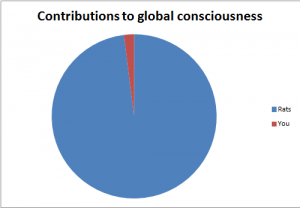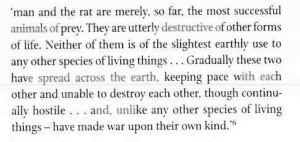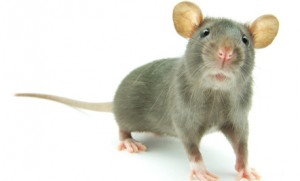After so much reading on the subjects of rats and rats in the lab I now understand how little I knew about this species. Right off the bat I was surprised that laboratory rats were called heroes and how often rats and humans were compared. I was also surprised at extreme emotional spectrum that rats elicit, namely because I have never given them much thought. In one instance the word rat itself apparently produces an almost disgusted response in humans and in the next we revere their contributions to medical research in the lab. At first I was not convinced of the similarities between humans and rats especially in Rader readings regarding Mickey Mouse and the supposed intentions of Disneyland. As I read and learned of how effectively and efficiently rats evolve I began to understand this connection. It seems to me and based on these readings that rats have suffered the least from human expansion. Not only are they evident in almost every man made structure, they actually thrive from it. When one compares the presence of rats in human life with other animals, besides those that we intentionally make a part of our environment, they are in a class of their own. In fact a rat in a city may be one of the only wild animals you can see apart from birds and other rodents. Perhaps this is why pigeons are referred to as rat with wings. Not only are they present in large numbers as well as rats but they are part of the small group of wild animals able to survive in man-made environments. The adaptive ability of the rat cannot be repudiated but I find it doubtful that they will ‘inherit the world’ someday. The other similarity between rat and human that I would have never made is the selfishness of these two species in regard to other animals. Just as we exploit animals for our benefit with little to no benefit to them, depending on your standing on such issues, rats exploit us with little to no benefit on our part. I found this fact really interesting because I can think of no other animal that has been able to ‘pull one over’ on humans like this. I believe that this is a main contributor to our dislike of the rats in addition to many others.
To dislike the rat because it exploits us would certainly illustrate the hypocritical nature of human beings but I can’t help but feel some used. In earlier times I could easily see the frustration our ancestors had towards the ever present rat. The presence of the rat is magnified because no other species is so unintentionally integrated into human life. I almost see it as an annoying little brother following an older brother around, reaping from his successes. It could almost devalue such progress if it becomes apparent that even a small rodent could match the same feet. What I mean is imagine humans overcoming a pretty significant barrier such as water due to our innovation of a boat. Now imagine conquering something that could not have been accomplished before and then realizing that freeloading rat can also cross an entire ocean simply because they hoped aboard. I would definitely lose some pride if I stepped foot on an unmanned island and turned around to see rats marching the beach as well. I know this is a selfish view but I feel like it is human nature and understandable if not acceptable. Another reason for human distain towards rats given in the reading is their reversion to cannibalism if resources are low. I wish this was highlighted more in the reading simply because in all the similarities between humans and rats, this is one stark contrast. I feel like the contrast is so great that rat cannibalism should be credited as the main source of our distaste for rats. Of course there are exceptions but cannibalism is and has been such a taboo in our species. It is not such a stretch of the imagination then to picture an ancestor of ours coming across a group of rats eating a fellow rat and being disgusted by the sight. This brings me to the next major point of why we dislike rats, the way in which they eat their food. In naming them the Latin root comes from the word gnaw. Being named after the way in which they eat clearly marks our intrigue in this part of their lives. Again I can picture an ancestor of ours being disgusted by the way in which a rat ate simply because it is so different from the way in which we eat.
One point that Bart made in which I did not agree was in regards to his explanation of the view of rats changing from thief to dirty. He claims that as we put filth away from sight and rats then moved into this filth, that they are still clean themselves and so this is not a substantial theory in the transition of public opinion. I feel like Bart needs to give this stance more support even though rats themselves are still clean. Think of the toilet, it is one of the cleanliest parts of the house yet it is not regarded as such and shares a negative public human opinion with the rat. Perhaps an ancient reason for the negative view of rats is their resemblance to locust. As I read Burt’s passage regarding their sheer number and willingness to eat anything and everything in their path I could not help but compare them to locus. And as so much of this class and our history as shown, if something can be drawn back to religion it can be given a lot of validation as a reason or cause.
In the Rader reading I was very surprised at the resistance Little met in trying to connect the field of medicine and genetics. Today these are so incorporated that it is hard to imagine them ever being distinguished from one another. In the Shapiro reading I mostly understood the reasoning behind the treatment and attitude towards lab animals. It is necessary to forget the individuality among a species used to better the human race. In regards to behavior and psychological testing, however, I feel that much more emphasis must be placed on the individual because these are much more variable. Just as with humans, I believe that animals are more than just the sum of their individual biological processes. Giving an animal a name and a personality could help keep this in mind while conducting experiments.




